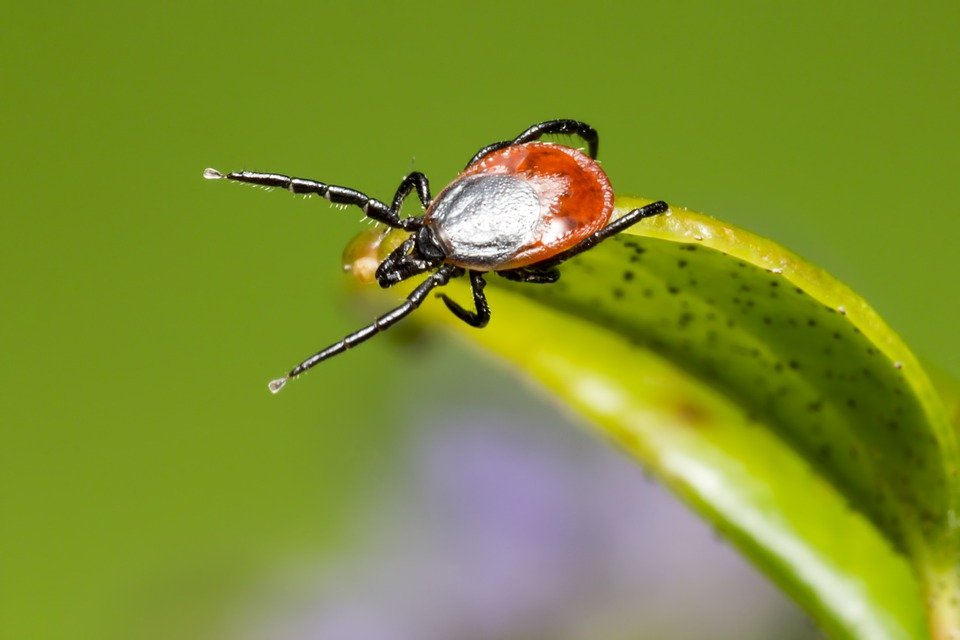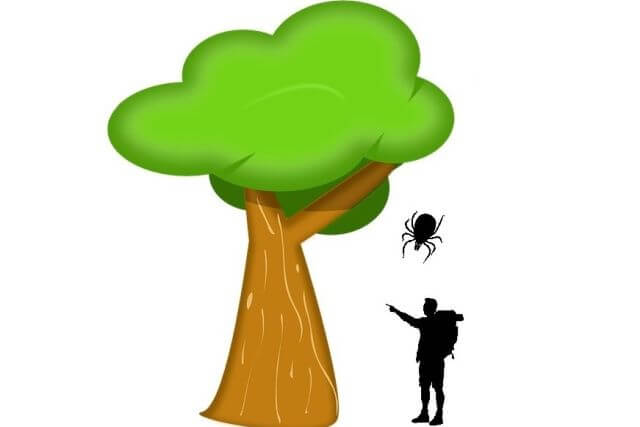The question always arises when it comes to ticks “do ticks fall from trees?” The short answer: No, ticks don’t fall from trees. A walk under trees hardly poses a risk of a tick falling on you. To fall from a tree, the ticks would first have to climb up. This is far too energy-consuming, so ticks have a more energy-efficient method to find a victim. They simply sit on something low above the ground and wait.
Ticks do not fall from Trees
In order to fall out of a tree, ticks would first have to climb up a tree, but in reality, ticks rarely climb more than a few inches high and then lie in wait on branches or bushes.
 If Ticks Don’t Fall From Trees, How Do They Find A Host?
If Ticks Don’t Fall From Trees, How Do They Find A Host?
Well, ticks have a very special way of hunting. They lurk silently sitting on blades of grass, on bushes, and in the undergrowth. Usually quite low, not much higher than the height of the typical host animal. So there they sit in wait for a warm-blooded host, such as an animal or if one comes along, a human will also do.
Ticks Can Smell Their Host
On this low-height vantage point, they wait (questing), with their front legs stretched out into the air. There are sensory organs on their front legs. These sensory organs can perceive the metabolic products such as carbon dioxide or lactic acid that the warm-blooded host produces and emits through its skin.
When the tick perceives the corresponding stimuli, it will immediately let go of its hind legs and cling firmly to the prey that is passing by with its front legs.
The tick is, so to speak, simply stripped from its waiting place by the host animal. It doesn’t have to do much except hold on to something as soon as something smells of prey. Then the tick instinctively begins to search for a suitable bite site.

Where Do The Ticks Lurk For A Host?
Ticks are found almost everywhere where their host animals live. However, the preferred habitats for ticks are areas where the humidity is not too low. This includes places where there is enough vegetation that provides shade. For example, forests, clearings, forest paths with hedges, lush grasses, shrubs, and bushes. The parasites can also be found in home gardens, in the city park, and even on the playgrounds. In other words, they can be anywhere. And because of climate change with longer warm periods, they spread rapidly into new areas.
When Are Ticks Active?
To be active, ticks need a certain temperature. If it is too cold and the temperature drops to below about 45 degrees Fahrenheit (7C), then they fall into a kind of stasis. In the tropics, where most tick species occur, ticks can be active all year round.
In the temperate climates of the northern and southern hemispheres, tick activity is usually limited to the months from March to November. But although summer is generally classified as tick season, the small arachnids can become active in the other months as soon as the temperature rises above 45 degrees Fahrenheit (7C) for a couple of days. And as soon as they are “awake” they start looking for a host to bite.
What Time Of Day Are Ticks Most Active
In hot midsummer months, increased tick activity can be observed in the early morning hours or at night.
So it is not only the seasons that influence the tick activity. The little crawlers can also be more or less active at different times of the day. Especially during the hot, dry summer months, when the midday temperature can be scorching for ticks, their activity is reduced.
If the ticks were to sit too exposed on blades of grass and branches during the day’s heat and wait for a host, they would lose too much water and dry out. When the weather is particularly hot and dry, they must hide on the ground under leaves or in thick vegetation to protect themselves from the dry heat.
Protection against ticks
Well, as ticks do not fall from trees but wait on grass and low-growing shrubbery for a possible victim, it is particularly important to make the parts of the body that would be the area of the first contact as uninviting as possible.
Long trousers that reach over the shoes can make it difficult for the parasites. More effective is wearing special tick-repelling clothing in combination with the use of insect repellent.
Conclusion
Let’s summarize the most important things again. The assumption that ticks fall from trees is wrong, but the myth persists. In fact, ticks sit in grasses and low scrub just above the ground. Here they wait with outstretched front legs for a warm-blooded animal or human to pass close enough to grab hold of it.
References
https://www.epa.gov/climate-indicators/climate-change-indicators-lyme-disease


